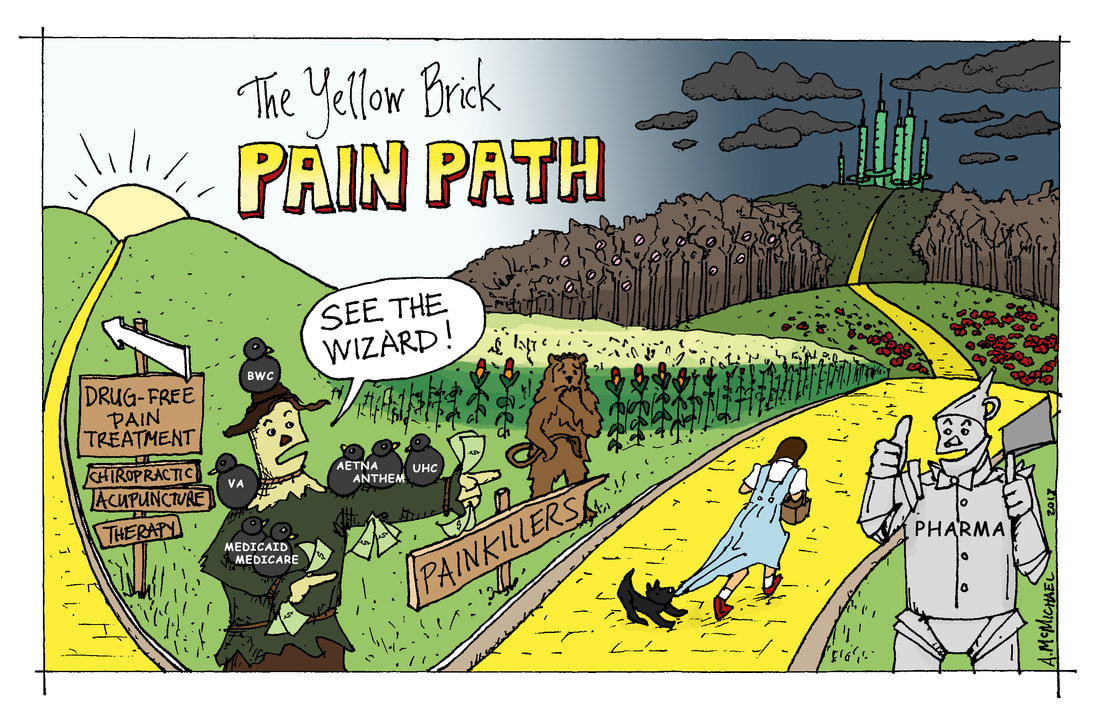Opioids & Ohio's Healthcare Payers
An Analysis of 2018 Healthcare Payer Policies for Coverage of Non-Pharmacologic Treatment as an Alternative to Opioid Prescriptions as Recommended by Pain Treatment Guidelines
Ohio State Chiropractic Association Opioid Task Force
Co-Chair Pat Ensminger, DC Co-Chair Debra Skrznecki, DC, RN
Lead Author Aaron McMichael, DC Judson Sprandel, DC, Dipl. Ac. Ron Vargo, DC, DACRB
Ohio State Chiropractic Association Opioid Task Force
Co-Chair Pat Ensminger, DC Co-Chair Debra Skrznecki, DC, RN
Lead Author Aaron McMichael, DC Judson Sprandel, DC, Dipl. Ac. Ron Vargo, DC, DACRB
|
The overprescription of opioids for pain has been recognized as a key factor in the growing opioid epidemic in the United States. In response, state and national agencies and organizations have recommended that non-pharmacologic treatments like chiropractic be used for pain as an alternative to opioids. At the same time, government leaders and groups have acknowledged extensive barriers limiting access and coverage of these non-pharmacologic pain treatments. The opioid epidemic continues and 1-2 years have passed since the publication of opioid guidelines recommending non-pharmacologic alternatives. This survey was performed to evaluate whether Ohio’s major healthcare payers have responded with improved coverage for these non-pharmacologic treatment options.
Chiropractic physicians actively practicing in Ohio were questioned about coverage provided by Ohio’s largest private and public payers (Medical Mutual, Anthem Blue Cross Blue Shield, Aetna, United Healthcare, Medicare, Medicaid, Workers Compensation, Veterans Administration). The results of this survey indicate Ohio’s largest healthcare payers have not improved or have only minimally improved coverage for alternatives to opioids as recommended. Most, if not all payers, appear to be continuing to provide better coverage for opioid treatment than for non-pharmacologic alternatives like chiropractic. Survey results indicate this coverage is resulting in increased use of prescription opioids and healthcare payers are therefore contributing to the ongoing opioid epidemic in Ohio. |
Download the following reports for more information on the analysis of Ohio's healthcare payers.
The 34-page Full Report includes detailed background information and analysis with full references. The Summary Report is a 6-page report focused on the most important information and results. The 2-page Snapshot Report provides a quick results-focused look at the report.
For more information contact:
Pat Ensminger, DC Ohio State Chiropractic Association Opioid Task Force Co-Chair (330) 372-9000 | dretrumbull@gmail.com | ||||||||||||||||||

